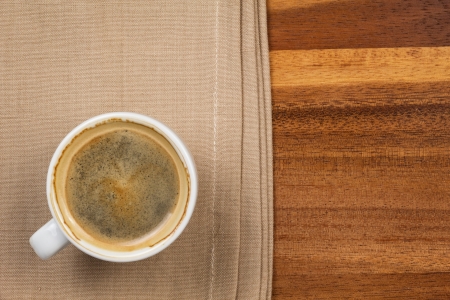Introduction to the Moka Pot
If you’ve ever wandered into a British kitchen on a crisp morning, chances are you’ve spotted the iconic silhouette of a Moka Pot perched atop the hob. This classic stovetop coffee maker has become a beloved staple in homes across the UK, cherished for its ability to brew strong, aromatic coffee without the fuss of complex machinery. For many families, myself included, the gentle gurgle of a Moka Pot signals the start of a new day and brings everyone together for that first comforting cup. In this article, we’ll take a closer look at why the Moka Pot holds such a special place in our morning routines, its growing popularity among coffee lovers, and how understanding its science can help us unlock even richer flavours right at home. Whether you’re a seasoned coffee enthusiast or simply enjoy a warm brew before school runs and work commutes, let’s explore what makes the Moka Pot an enduring favourite in British households.
Key Variables in Moka Pot Extraction
If you’re keen to master your daily brew with a Moka pot, it’s essential to understand the key variables that influence the final cup. Much like preparing a comforting home-cooked meal, every little detail matters – from how fine you grind your beans, to the water temperature, and even the ratio of coffee to water. Let’s break down these essentials with some practical British advice for that perfect morning pick-me-up.
Grind Size: The Foundation of Flavour
The grind size is one of the most critical factors for your Moka pot. Too coarse, and your coffee may taste weak; too fine, and you risk clogging the filter or ending up with a bitter brew. For most UK households, aim for a grind slightly coarser than espresso but finer than what you’d use for a cafetière (French press). Think of it as resembling table salt – not quite powdery, but definitely not chunky either.
Water Temperature: Getting It Just Right
Using boiling hot water can make your Moka pot coffee taste harsh or burnt, while cold water slows extraction and may result in underwhelming flavour. The sweet spot? Start with freshly boiled water that’s been left to cool for around 30 seconds – typically between 90°C and 95°C. This helps preserve those delicate flavours we all love without scalding the grounds.
Coffee-to-Water Ratio: Striking the Balance
Achieving that rich, satisfying cup relies on balancing coffee and water just right. As a starting point, use about 1 part coffee to 7 parts water by weight. Here’s a handy table to guide you:
| Moka Pot Size | Coffee (g) | Water (ml) |
|---|---|---|
| 1-cup | 7g | 60ml |
| 3-cup | 15g | 200ml |
| 6-cup | 25g | 350ml |
Practical Tips for British Homes
Avoid overfilling the filter basket or packing the grounds too tightly – gentle levelling works best. Use filtered tap water if you live in a hard-water area to prevent limescale and keep flavours clean. Remember, a bit of patience goes a long way: allow your Moka pot to do its magic over medium-low heat for a smoother finish.
![]()
3. Understanding Flavour Profiles
If you’ve ever sipped a cup of Moka Pot coffee, you’ll know it’s quite a unique experience compared to filter or cafetière brews. The science behind the extraction gives Moka Pot coffee its signature strong and robust character. But what about the flavours? Let’s take a closer look at the different flavour notes you can expect and how to tailor your brew for the British palate.
Classic Flavour Notes from a Moka Pot
Moka Pot coffee is typically bold, with rich chocolatey undertones, toasted nuts, and sometimes even hints of caramel or dark fruit. This intensity comes from the pressure-based extraction, which draws out more oils and soluble solids from the grounds. You might notice a pleasant bitterness, balanced by a subtle sweetness—much like a good British dark chocolate or a well-made Yorkshire tea.
Tailoring Your Brew for British Tastes
Here in the UK, many of us prefer our coffee smooth and well-rounded, rather than overly sharp or acidic. To achieve this with your Moka Pot:
- Choose medium-roast beans: These tend to bring out chocolate and nutty notes without overwhelming bitterness.
- Grind slightly coarser: A coarser grind helps avoid over-extraction, keeping the flavours clean and less harsh.
- Add a splash of milk: Many Brits enjoy their coffee milky; adding warmed milk can mellow out the punchy flavours, making your cup comforting and familiar.
A Final Thought for Mum’s Kitchen
The beauty of the Moka Pot is that it lets you experiment until you find just the right taste for your family. Whether you’re serving up an after-dinner treat or making a morning pick-me-up, understanding these flavour profiles means you can craft a cup that feels perfectly at home in any British kitchen.
4. Techniques for the Perfect Brew
If you’ve ever watched a proper brew come together in mum’s kitchen, you’ll know there’s a certain magic to making Moka pot coffee. But it’s not just about magic – it’s about following the right steps, using the right heat, and assembling everything with love. Let me walk you through a step-by-step guide, steeped in those comforting family traditions and British cosiness, so every cup is as warm and flavoursome as possible.
Step-by-Step Guidance from Mum’s Kitchen
1. Gathering Your Essentials
First things first, make sure you have your Moka pot (clean and dry), freshly ground coffee (medium-fine works best), hot water from the kettle, and a gentle hob flame ready. It’s all about starting with quality ingredients – something mum always insists on!
2. Assembling with Care
| Part | What to Do |
|---|---|
| Bottom Chamber | Fill up to just below the safety valve with freshly boiled water – this helps avoid bitterness. |
| Coffee Basket | Fill evenly with coffee grounds; don’t tamp down, just level off with a gentle shake. |
| Top Section | Screw on firmly but don’t over-tighten. Make sure the rubber gasket sits properly to prevent leaks. |
3. Mastering Heat Control
Mum always says patience is key. Place the assembled pot on a medium-low hob. Too much heat can scorch your brew, while too little will drag out the process and muddy the flavour. If you’re using an electric hob, consider a heat diffuser for more even warmth.
Heat & Timing Tips Table:
| Stage | Heat Level | Time (Approx.) | Mum’s Tip |
|---|---|---|---|
| Initial Heating | Medium-low | 1-2 mins until bubbling starts | Listen for a gentle bubbling sound, not hissing. |
| Brew Extraction | Keep steady, do not increase! | 2-3 mins until top fills up | Lid closed, watch for rich brown stream. |
| Brew Finish | Remove from heat promptly | – | If it splutters loudly, take off heat immediately! |
4. The Final Touch: Serving Up Warmth
Pourover into small cups straight away – that’s when the aroma is at its best. If you fancy being extra British, serve with a splash of milk or cream and perhaps a biscuit or two on the side. Most importantly, gather everyone around for that first sip; after all, coffee is meant to be shared.
5. Common Mistakes and How to Avoid Them
As a mum who treasures those precious moments with a freshly brewed cup, I know how frustrating it can be when your Moka Pot coffee doesnt turn out quite right. But don’t worry, love — we’ve all been there! Here’s a gentle guide to the most common mishaps with the Moka Pot, and some practical British mum’s solutions to help you enjoy a consistently lovely brew.
Overfilling or Underfilling the Water Chamber
It might seem harmless to add a splash more water for an extra cup or two, but overfilling the lower chamber can lead to weak coffee or even cause sputtering. Likewise, too little water means burnt grounds and bitter flavours. Always fill up to just below the safety valve — a simple trick that makes all the difference.
Packing Coffee Too Tightly
Many people think tamping down the coffee like an espresso shot is best, but with a Moka Pot, this actually blocks water flow and leads to uneven extraction. Just fill the basket with ground coffee and level it off with a gentle shake; no need to press it down. Trust me, a light touch is all you need!
Using the Wrong Grind Size
If your coffee tastes harsh or watery, check your grind. For Moka Pots, you want something between espresso-fine and filter-coarse — think of caster sugar texture. Too fine causes blockages; too coarse gives you bland coffee. A quick chat with your local roaster or even experimenting at home will help you find that sweet spot.
Rushing the Brewing Process
I know mornings can be hectic (school runs, anyone?), but cranking up the heat only scorches your precious coffee. Instead, pop your Moka Pot on a medium-low flame and let it gently bubble away. Listen out for that familiar gurgle — its your cue for perfectly extracted coffee without any bitterness.
Neglecting Regular Cleaning
A build-up of old oils and grounds can really dampen those lovely flavours. After each use, allow your pot to cool slightly before rinsing all parts thoroughly with warm water (no soap needed). Every so often, give the rubber gasket and filter a closer look and replace them if they look worn — much like keeping your favourite teapot sparkling!
Forgetting About Freshness
Even the best technique can’t save stale beans. Buy fresh whole beans in small amounts if possible, store them in an airtight container away from sunlight, and grind just before brewing for maximum aroma and flavour. There’s nothing quite like it — trust me!
With these gentle reminders, you’ll soon find yourself enjoying consistently delicious cups from your Moka Pot. After all, as any British mum would say: there’s always time for a proper cuppa done right!
6. Making Moka Pot Coffee Part of Your Daily Ritual
As a mum who cherishes every moment spent with family, I truly believe that the humble Moka Pot can become a delightful part of your daily routine. There’s something wonderfully comforting about the gentle bubbling sound as the coffee brews—its like an invitation to slow down and savour the present. Why not make your morning cuppa a special family ritual? Set out your favourite mugs, perhaps even let the little ones help by measuring out the coffee grounds (with supervision, of course), and enjoy those few minutes together as the rich aroma fills your kitchen. For an extra cosiness on chilly British mornings, serve your Moka Pot coffee with warm croissants or buttered toast. If you fancy a treat, add a splash of steamed milk or a sprinkle of chocolate powder for a homemade mocha that rivals any café. Sharing stories over a fresh brew is a lovely way to start the day or unwind after school runs and busy afternoons. By making Moka Pot coffee part of your everyday life, you’re not just enjoying better flavour—you’re creating heartwarming moments and memories that your family will treasure.


